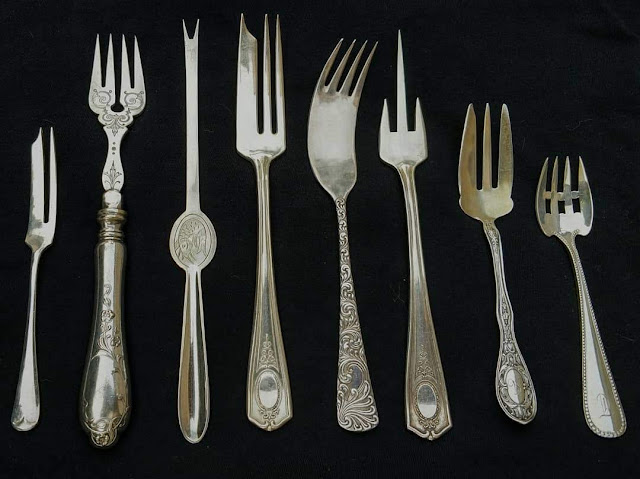Etiquette-fully Doing What's Best for Your Health and Safety
Our accustomed work availabilities, personal services, shopping routines, opportunities, schedules, deliveries, get-togethers, savings accounts, parties, eating out, routine health visits . . . the list goes on -- all but disappeared within a month. As society is adjusting, we’re observing angst in simple communication of needs regarding individual and family health concerns.
Today’s health and safety issues loom large, reflecting widespread fear and concern about public policies and outcomes. Disconcertingly, civil conversation can seem reserved only for those holding similar views. Deeply-held beliefs about our safety and health loom large, and can affect our civility towards others, obstructing or interfering with constructive discourse or simple statements and requests regarding one's health needs.
Asking for What You Need
We're hearing a lot of un-etiquette-ful comments these days outside the margins of expressing one's personal needs. Do any of the following comments sound familiar to you?
Stating a health need, but prefacing or adding an opinion or belief about reality.
Stating a health need, but prefacing or adding an opinion or belief about reality.
- “The virus is real, not a national conspiracy, so I want some social distancing if you don’t mind!”
- “I want my deliveries placed on the bottom step not close to my front door, as delivery people are sources of infection.”
- “Get a proper mask or stand further away from me.”
Demands and accusations.
- “I don’t care what the store manager says, you don’t have the right not to wear mask and serve the public. Fact is, you’re breathing on my food as you’re ringing it up!”
- “You have no right to open your restaurant, as someone is bound to get sick with the virus.”
- “I don’t wear a mask, and you’re nutty to be pushing all this fear.”
Blurt-outs
- “You’re crazy going to a restaurant and risking infection. Do you really think that is wise?”
- “Isn’t it now a bit of over-reaction to stick to quarantine rules and refuse to go out until there is a vaccine?”
- “You can’t make me come to work until you prove that I am safe.”
There is no better time than now to ask Etiquette to come to our rescue! After all, you should be able to state what you believe is best for you or a family member in your charge, directly and respectfully.
Asking directly, clearly and kindly for what you need is etiquette-ful.
- “John, you’re a little close for me. Let’s stand further apart.”
- “Family, I want to develop a TV use schedule, as I need one half hour for myself for some exercise video time.”
- “I hear your apology for standing too close. I will stand back a little and help out, too.”
- “Ginny, I’m so grateful you can babysit for me again. I hope you don’t mind my asking, for your reassurance that there be frequent hand-washing.”
- “Hey guys, if we’re going to get together, just know my boundaries include social distancing—with love, of course!”
- “I know you and friends don’t wear masks, but I know you will honor my request that when we’re together, we all do.”
Civility Self-checks
Is the issue at hand a matter of “live and let live?”
Whether vendors are wearing face masks is not a confrontational issue. Instead of arguing with those who aren’t wearing face masks, simply choose to shop elsewhere.
Ask yourself, “Am I being ‘recognizably respectful’ to others?”
For example: Assume you are sheltering at home, and your washing machine has gone out. You notify the company of your health safety expectations, instructing that anyone who enters your home must wear a mask, put on fresh gloves in front of you, and wear the shoe covers that you’re providing. Acknowledge you are adding burden and that you appreciate their care and concern for your health. Your gratitude might extend to a hand-written note.
Am I being cool, calm, and collected?
If you sense that emotion is involved, take a pause and think through what you want to convey. Active listening and an encouraging statement may be just the right thing to do.
The person with whom you are speaking may have a completely different perspective and mindset on what the situation at hand is. That person may be in the same position as you, trying to figure out how to ask for something regarding her own health and safety or needing to be respected for a different view on what’s being called for.
For all of us, things can seem a bit too much. It may be helpful to remember that though our current generation has not dealt with a pandemic, humans have dealt with them before. Then, as now, everyone did the best they could to get through it. The most important thing is, they got through it. And we will, too.
Whether vendors are wearing face masks is not a confrontational issue. Instead of arguing with those who aren’t wearing face masks, simply choose to shop elsewhere.
Ask yourself, “Am I being ‘recognizably respectful’ to others?”
For example: Assume you are sheltering at home, and your washing machine has gone out. You notify the company of your health safety expectations, instructing that anyone who enters your home must wear a mask, put on fresh gloves in front of you, and wear the shoe covers that you’re providing. Acknowledge you are adding burden and that you appreciate their care and concern for your health. Your gratitude might extend to a hand-written note.
Am I being cool, calm, and collected?
If you sense that emotion is involved, take a pause and think through what you want to convey. Active listening and an encouraging statement may be just the right thing to do.
The person with whom you are speaking may have a completely different perspective and mindset on what the situation at hand is. That person may be in the same position as you, trying to figure out how to ask for something regarding her own health and safety or needing to be respected for a different view on what’s being called for.
For all of us, things can seem a bit too much. It may be helpful to remember that though our current generation has not dealt with a pandemic, humans have dealt with them before. Then, as now, everyone did the best they could to get through it. The most important thing is, they got through it. And we will, too.
Contributor, Candace Smith is a retired, national award-winning secondary school educator, Candace Smith teaches university students and professionals the soft skills of etiquette and protocol. She found these skills necessary in her own life after her husband received international recognition in 2002. Plunged into a new “normal” of travel and formal social gatherings with global leaders, she discovered how uncomfortable she was in many important social situations. After extensive training in etiquette and protocol, Candace realized a markedly increased confidence level in meeting and greeting and dining skills and was inspired to share these skills that will help others gain comfort and confidence in dining and networking situations. Learn more at http://www.candacesmithetiquette.com/
Etiquette. Enthusiast, Maura J Graber, is the Site Editor for the Etiquipedia© Etiquette Encyclopedia

















